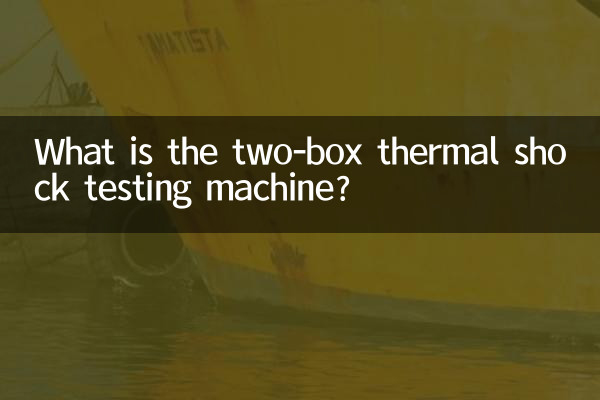What is the two-box thermal shock testing machine?
In recent years, with the rapid development of science and technology and industry, the demand for environmental reliability testing equipment is growing day by day. As one of the important equipment, the two-box thermal shock testing machine has received widespread attention. This article will introduce in detail the definition, working principle, application fields and comparison of popular models in the market to help readers fully understand this equipment.
1. Definition of two-box thermal shock testing machine

The two-box thermal shock testing machine is a testing equipment used to simulate extreme temperature changes. It is mainly used to test the performance and reliability of products under rapid temperature changes. It achieves rapid temperature switching through two independent temperature zones (high temperature box and low temperature box), thereby simulating the temperature shock that the product may encounter in the real environment.
2. Working principle of the two-box thermal shock testing machine
The working principle of the two-box thermal shock testing machine is to achieve rapid temperature changes by quickly moving the test sample between two temperature zones. The specific process is as follows:
1. The sample is placed in a high temperature box for high temperature testing.
2. Use a robotic arm or mobile device to quickly transfer the sample to the cryogenic chamber for low-temperature testing.
3. Repeat the above steps in a loop to simulate the performance of the product under extreme temperature changes.
3. Application fields of two-box thermal shock testing machine
Two-box thermal shock testing machine is widely used in the following industries:
| Industry | Application scenarios |
|---|---|
| Electronic appliances | Test the reliability of circuit boards, chips, displays, etc. under temperature shock |
| automobile manufacturing | Test auto parts, batteries, electronic control systems, etc. |
| Aerospace | Test aircraft parts, satellite assemblies and more under extreme temperatures |
| Military industry | Test the stability of weapons and equipment, communication equipment, etc. in harsh environments |
| Materials Science | Test the physical and chemical properties of new materials under temperature changes |
4. Comparison of popular two-box thermal shock testing machine models
The following is a comparison of the popular two-box thermal shock testing machine models and their parameters on the market recently:
| Model | temperature range | conversion time | volume | Brand |
|---|---|---|---|---|
| TSE-202 | -70℃ ~ +180℃ | ≤10 seconds | 50L | TestEquity |
| CTS-600 | -65℃ ~ +150℃ | ≤15 seconds | 100L | ESPEC |
| TSR-300 | -40℃ ~ +200℃ | ≤5 seconds | 30L | Thermotron |
| CSZ-450 | -55℃ ~ +170℃ | ≤8 seconds | 80L | CSZ |
5. Suggestions for purchasing a two-box thermal shock testing machine
When purchasing a two-box thermal shock testing machine, you need to consider the following factors:
1.temperature range: Select the appropriate high and low temperature range according to the test requirements.
2.conversion time: The shorter the conversion time, the more realistic the simulated impact effect will be.
3.volume: Select the appropriate test box volume according to the sample size.
4.Brand and after-sales service: Choose well-known brands to ensure equipment quality and after-sales service.
6. Summary
The two-box thermal shock testing machine is an important equipment in environmental reliability testing and is widely used in electronics, automobiles, aerospace and other fields. Through rapid temperature switching, it can simulate the impact of extreme temperature changes on product performance, helping manufacturers improve product reliability and durability. When purchasing, users should choose the appropriate model and parameters based on actual needs.
With the advancement of technology, the performance of the two-box thermal shock testing machine will be further improved, providing more accurate testing solutions for more industries.

check the details

check the details